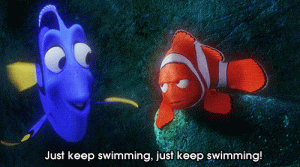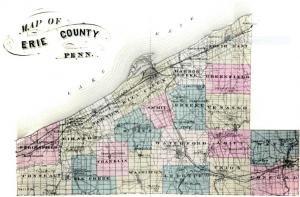
In our case of musicological mapping, ‘researching’ can be substituted for ‘swimming’, but the general concept remains the same
In my work on musicological mapping up to this point, I have found that by far my greatest and most important asset has been persistence. At this point in the term, our class has divided mostly into smaller subgroups each tasked with researching and mapping different pieces of Burleigh’s life. Annika and I have taken on H.T. Burleigh’s early (pre-New York City) life. As such, our first order of business has been to comb through existing research on his life (much of it by Jean Snyder) seeking event and location names to enter into a shared spreadsheet. After that, we go through each event and try to find a latitude/longitude pair (henceforth lat/long pair) associated with the place where it occurred. At first blush, this might not seem particularly difficult. After all, can’t one simply plug the location name into Google maps and pull the lat/long information from there? Alas, if only it were so simple! In order to do this accurately, and do our map justice, we must find where the building (or park) where the event occurred existed in the late 1800s. Most all of the locations have either moved, changed names, or no longer exist at all. In the beginning, this seemed to be at best an obnoxious difficulty and, at worst, an insurmountable obstacle. During our first research session, and after many hours of searching, including a call and email to the Erie Historical Society, we had found exactly four lat/long pairs of the forty events we had so far. The glacial pace of this process was clearly not going to work long term, but I was not sure how to expedite it until I serendipitously came across Samuel P Bates’s History of Erie County, Pennsylvania.
It is hard to describe exactly how exciting the discovery of this resource was, and probably even harder to understand if you haven’t done this kind of research yourself, but if I had to quantify the excitement, it would definitely rank above the discovery of sliced bread. (re: very exciting) In his book, Bates goes into unprecedented depth on the various organizations, buildings, businesses, and even secret societies throughout Erie. Using this resource, most of the rest of the lat/long pairs came easily, so much so that I now look forward now to hunting down the exact locations of new events that we come across. The moral? Sometimes, in research and in life, it pays to just keep swimming!

You must be logged in to post a comment.